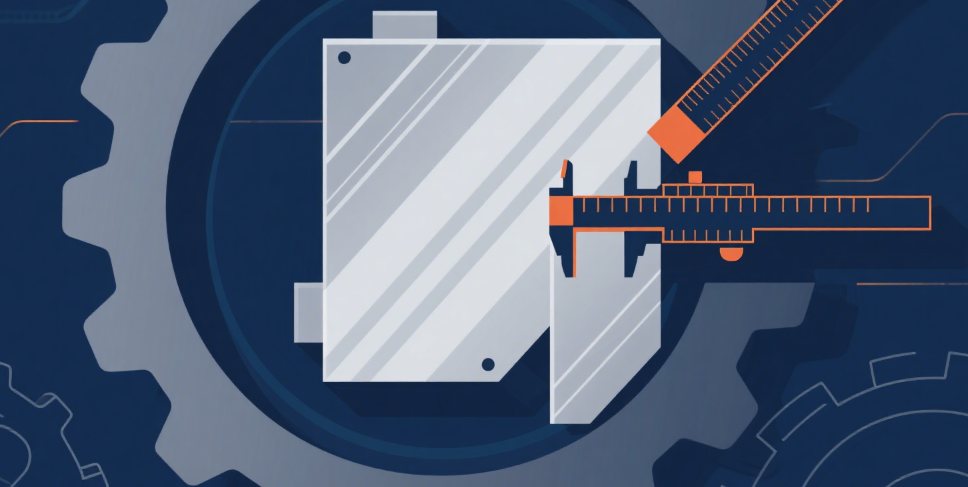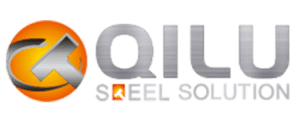Table of Contents
Introduction
Industrial metal sheets are essential materials in modern manufacturing, construction, and fabrication industries. From automotive to aerospace, metal sheets form the backbone of countless products. Their versatility, durability, and adaptability make them a preferred choice for engineers, procurement managers, and production planners. However, managing costs while maintaining quality can be challenging.
Rising raw material prices, production inefficiencies, and waste management issues often inflate expenses. Smart strategies for sourcing, processing, and utilizing industrial metal sheets can significantly reduce operational costs. This article explores five actionable cost-saving strategies that B2B buyers and manufacturing decision-makers should know.
By applying these strategies, companies can improve efficiency, minimize material waste, and maintain high-quality standards while optimizing budget allocations.
Strategy 1: Optimize Material Selection for Industrial Metal Sheets

One of the most direct and effective ways to reduce production costs is to choose the right type of industrial metal sheets for each application. Metal sheets are available in a wide range of materials, including stainless steel, aluminum, galvanized steel, carbon steel, and specialty alloys. Each material has unique properties that impact durability, corrosion resistance, machinability, thermal performance, and weight. Selecting the most suitable material is not just about price—it’s about achieving a balance between performance, longevity, and cost efficiency.
Assessing Material Performance vs. Cost
When selecting industrial metal sheets, manufacturers must carefully analyze the operational requirements of their products. For instance, stainless steel provides exceptional corrosion resistance, making it ideal for marine, chemical, or food processing applications. However, its higher cost compared to galvanized steel can make it less suitable for applications where extreme corrosion resistance is not necessary. Aluminum, while lightweight and corrosion-resistant, can be expensive for large-scale projects, though its low density makes it advantageous for aerospace or automotive applications where weight reduction is critical.
Other factors to consider include tensile strength, formability, weldability, and surface finish requirements. Carbon steel, for example, is highly durable and cost-effective but may require protective coatings to prevent rust. Specialty alloys can offer excellent mechanical properties or heat resistance but may significantly increase the material budget. By carefully evaluating these factors, companies can minimize over-specification and select materials that meet performance requirements without unnecessary expenditure.
Strategy 2: Implement Efficient Cutting and Fabrication Techniques
Efficient fabrication processes play a crucial role in reducing costs when working with industrial metal sheets. Improper cutting, bending, or stamping techniques can result in high material wastage, additional labor costs, and production delays. Implementing advanced fabrication technologies can dramatically improve yield and efficiency while maintaining high-quality standards.
Benefits of Modern Fabrication Techniques
- Reduced Material Waste: Precision cutting using CNC laser machines, water jets, or plasma cutters minimizes offcuts and scrap. Optimizing cutting patterns through software-driven nesting further reduces waste.
- Lower Labor Costs: Automation reduces the need for manual intervention, speeding up production and decreasing labor expenses.
- Consistency in Quality: Accurate and repeatable fabrication ensures uniformity in product dimensions, reducing the risk of defects and rework.
- Shorter Lead Times: Advanced machinery allows faster turnaround, which can be critical for meeting tight production schedules.
Investing in modern machinery may have a significant upfront cost, but the long-term savings achieved through reduced scrap, labor efficiency, and consistent quality can far outweigh the initial investment. For companies producing large volumes of industrial metal sheets, these techniques are indispensable for staying competitive in the market.
Strategy 3: Efficient Inventory and Procurement Management of Industrial Metal Sheets

Effective procurement and inventory management can have a major impact on controlling costs for industrial metal sheets. B2B buyers must develop strategies that balance supply security, cost optimization, and operational flexibility.
Key Procurement Strategies
- Bulk Purchasing: Buying in larger quantities often reduces the unit price and ensures reliable supply. However, it requires higher upfront investment and adequate storage capacity.
- Just-in-Time (JIT) Procurement: This approach minimizes inventory holding costs and reduces the risk of material obsolescence. Precise planning and reliable suppliers are essential for success.
- Long-Term Supplier Contracts: Negotiating contracts for fixed periods ensures price stability and priority access to materials, though it may limit flexibility if market conditions change.
- Spot Purchasing: Purchasing on-demand offers flexibility and allows manufacturers to take advantage of market fluctuations but carries the risk of price volatility.
Table: Comparison of Procurement Strategies for Industrial Metal Sheets
| Procurement Method | Advantages | Potential Challenges | Cost Impact |
|---|---|---|---|
| Bulk Purchasing | Lower unit price, reliable supply | Higher initial investment | High savings on unit cost |
| Just-in-Time (JIT) | Reduces storage costs, minimal wastage | Requires precise planning | Moderate savings, avoids excess inventory |
| Long-Term Supplier Contracts | Price stability, priority supply | Less flexibility in changing suppliers | Moderate savings, predictable costs |
| Spot Purchasing | Flexible, respond to market fluctuations | Higher risk of price volatility | Potentially higher costs |
By analyzing these strategies, manufacturers can tailor procurement and inventory approaches to match production needs while minimizing costs. Optimized procurement also improves cash flow, reduces storage costs, and ensures uninterrupted production.
Strategy 4: Minimize Waste Through Recycling and Reuse

Industrial metal sheets generate significant scrap during production. Efficient Industrial metal sheets often generate significant scrap during cutting, bending, and stamping operations. Unmanaged, this scrap increases disposal costs and represents wasted raw material. Implementing effective recycling programs not only lowers costs but also promotes environmental sustainability.
Practical Recycling Approaches
- On-site Scrap Management: Segregating scrap by material type allows easy processing for reuse or sale to recyclers. Proper storage and labeling streamline the recycling workflow.
- Component Reuse: Smart design of components and optimized sheet layouts minimize offcuts. Using nesting software can maximize material utilization.
- Third-Party Recycling: Partnering with specialized recycling companies allows scrap to be remelted or repurposed, creating a secondary revenue stream while reducing disposal fees.
- Employee Training: Educating production staff on handling scrap and minimizing waste encourages a culture of cost efficiency.
Adopting structured recycling and reuse strategies can turn potential losses into measurable savings while reducing the environmental footprint of manufacturing operations.
Strategy 5: Invest in Quality Control for Industrial Metal Sheets
Quality issues with industrial metal sheets—such as thickness inconsistencies, surface defects, or material impurities—can lead to production delays, rework, and increased operational costs. Rigorous quality control measures ensure only compliant materials enter the production line, protecting both product performance and profitability.
Key Quality Control Practices
- Incoming Material Inspection: Verify thickness, grade, surface finish, and mechanical properties before production. Early detection prevents costly rework downstream.
- Automated Monitoring Systems: Sensors, laser scanners, and imaging systems provide real-time quality monitoring, ensuring rapid detection of deviations.
- Traceability: Maintaining detailed records of suppliers, batch numbers, and production conditions allows defects to be traced and corrected promptly.
- Process Audits: Regular audits of cutting, stamping, and forming processes ensure consistent quality and adherence to standards.
Investing in high-quality control reduces scrap, rework, and warranty claims, resulting in long-term cost savings. Manufacturers who implement these measures benefit from increased reliability, improved customer satisfaction, and stronger market competitiveness.
Conclusion
Industrial metal sheets are vital to manufacturing efficiency, but their costs can escalate without proper management. By optimizing material selection, improving fabrication efficiency, implementing smart procurement strategies, reducing waste, and enforcing strict quality control, businesses can maximize the value of their metal sheet investments.
These strategies not only save costs but also improve production reliability, enhance sustainability, and strengthen competitiveness in the marketplace. Smart management of industrial metal sheets ensures that manufacturers can maintain quality while controlling expenses, ultimately boosting profitability and operational resilience.
FAQ
Q1: What is the best material choice for cost-effective industrial metal sheets?
A1: It depends on the application. Galvanized steel and carbon steel are generally more cost-effective, while aluminum and stainless steel are better for specialized uses where performance outweighs cost.
Q2: How can cutting techniques reduce costs?
A2: Using CNC laser cutting, water jets, or precision stamping minimizes material waste and labor expenses, ensuring consistent product quality.
Q3: How does inventory management affect industrial metal sheet costs?
A3: Efficient inventory prevents overstocking and production delays. Bulk purchasing and long-term contracts often provide additional cost savings.
Q4: Can recycling really make a difference in metal sheet costs?
A4: Yes. On-site scrap management and partnerships with recyclers can reclaim raw material value, reducing both material and disposal costs.
Q5: Why is quality control important in cost-saving?
A5: Quality control prevents defects, reduces rework and scrap, and ensures consistent production, all of which contribute to lowering overall operational costs.
Q6: How does supplier selection impact costs for industrial metal sheets?
A6: Choosing reliable suppliers with consistent quality and competitive pricing reduces the risk of defects and price volatility, ensuring smoother production and lower overall costs.
Q7: What role does sheet thickness play in cost optimization?
A7: Selecting the appropriate thickness avoids over-specification. Thicker sheets may be more durable but increase material costs unnecessarily, while thinner sheets can reduce costs if performance requirements are met.
Q8: Are specialty coatings worth the investment for industrial metal sheets?
A8: Coatings like galvanization or anti-corrosion treatments can extend sheet lifespan, reduce maintenance, and prevent premature failures, often resulting in long-term savings despite higher upfront costs.
Q9: Can outsourcing fabrication reduce overall expenses?
A9: Outsourcing cutting, stamping, or bending to specialized contractors can lower labor, equipment, and maintenance costs, especially for low-volume or complex components.
Q10: How does production planning affect material utilization?
A10: Careful nesting of sheet layouts and batch planning reduces offcuts and scrap, maximizing material usage and minimizing unnecessary purchases.
Q11: What are the energy-saving strategies in industrial metal sheet production?
A11: Using energy-efficient machines, optimizing machine operation schedules, and reducing rework all help lower electricity and operational costs, contributing to overall cost efficiency.
Q12: How can traceability improve cost management?
A12: Maintaining detailed records of sheet batches, suppliers, and quality inspections helps quickly identify defects, reduce waste, and prevent recurring errors, saving time and money.
Q13: Are modular equipment solutions cost-effective for metal sheet processing?
A13: Modular systems, like integrated cutting and treatment units, reduce installation and operational costs, allow scalability, and simplify maintenance, which can significantly improve ROI.
Q14: How does market price fluctuation influence purchasing strategies?
A14: Monitoring metal market trends allows buyers to purchase during low-price periods, use futures contracts, or negotiate fixed prices, which can stabilize costs over time.
Q15: Can process automation provide long-term savings for metal sheet operations?
A15: Yes. Automation reduces labor dependency, improves accuracy, minimizes waste, and ensures consistent production, all of which contribute to substantial cost savings in the long run.
✨ Let’s Stay Connected!

If you enjoyed this blog on mechanical parts processing, don’t forget to join me on social media for more insights, updates, and community discussions.
📘 Facebook – Connect with me here
Let’s keep exploring, learning, and growing together. Thanks for reading, and see you in the next post! 🚀

